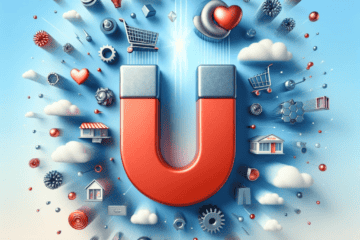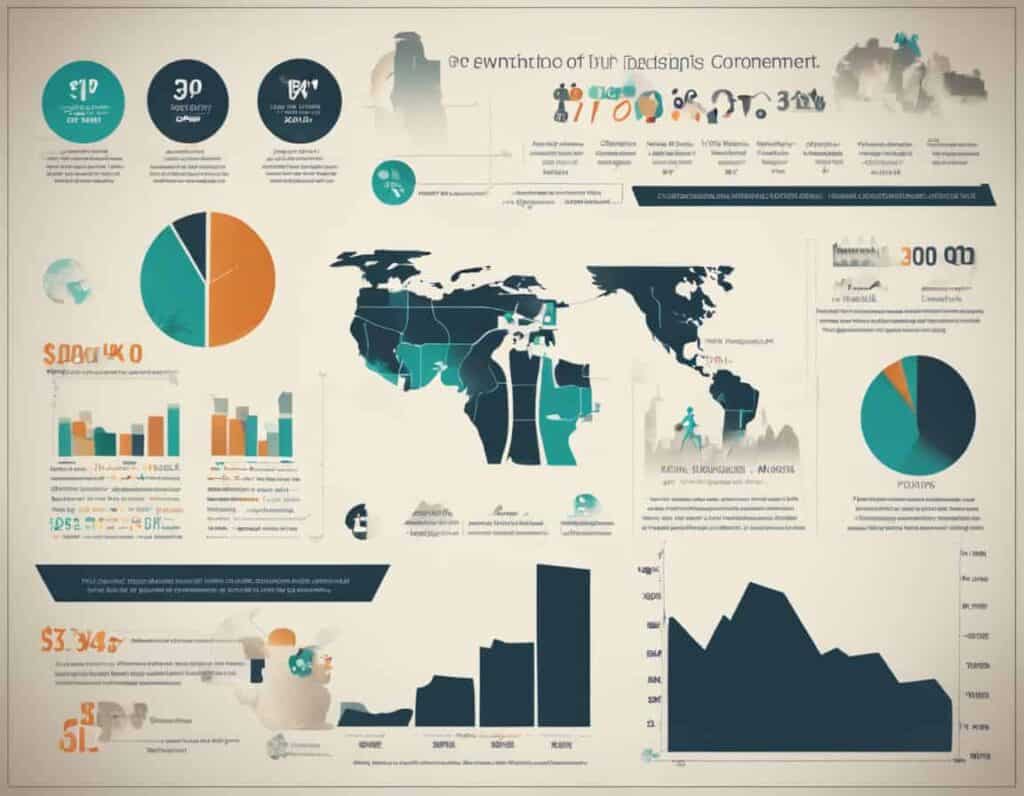In the fast-paced realm of field sales, success hinges on understanding and harnessing the power of Customer Relationship Management (CRM) metrics. These metrics serve as the compass guiding sales representatives, leaders, and teams towards enhanced performance, profitability, and customer satisfaction.
In this comprehensive guide, we’ll explore the essential CRM indicators crucial for measuring field sales success and optimizing CRM usage to drive revenue growth.
The Role of CRM Metrics in Field Sales
In the ever-evolving world of field sales, navigating the path to success requires more than just intuition—it demands actionable insights driven by statistics. CRM indicators serve as guiding lights in this journey, shedding light on crucial aspects like consumer interactions and sales performance.
Field sales professionals gain the power to steer their strategies towards profitability and user-centricity through the proper optimization of such metrics.
- Enhanced Customer Understanding: CRM indicators offer deep insights into consumer behavior, preferences, and needs, enabling field sales teams to tailor their approach accordingly.
- Improved Sales Performance: By tracking key performance indicators such as conversion rates and sales cycle length, CRM indicators empower sales representatives to identify areas for improvement and optimize their strategies for better results.
- Effective Resource Allocation: With a clear understanding of customer lifetime value and acquisition costs, field sales teams can allocate resources more efficiently, focusing efforts on high-value opportunities and channels.
- Streamlined Communication: CRM indicators, particularly response time and engagement rates, help streamline communication processes, ensuring timely and personalized interactions with prospects and consumers.
- Increased Retention: By monitoring churn rates and net promoter scores, field sales professionals can proactively address issues, strengthen relationships, and foster loyalty over the long term.
- Data-Driven Decision-Making: These provide a solid foundation for data-driven decision-making, enabling sales leaders to evaluate performance, forecast trends, and adjust strategies based on real-time insights.
- Competitive Advantage: Leveraging CRM indicators allows field sales teams to stay ahead of the competition by identifying market trends, understanding user sentiment, and adapting their approach to meet evolving demands.
By harnessing the power of CRM metrics, sales professionals can unlock new opportunities, drive growth, and forge stronger relationships with their audiences.
Essential CRM Metrics for Field Sales Success
These details provide valuable insights into consumer relationships, sales effectiveness, and revenue.
Here, we explore the essential CRM indicators that drive success in field sales, helping sales professionals make informed decisions and boost profitability.
1. Customer Lifetime Value (CLV)
This represents the total value a client brings to a business over their entire relationship.
It is calculated by summing up the revenue generated from a consumer over their lifetime, minus the costs associated with serving them.
Knowing and tracking CLV in field sales is crucial for prioritizing efforts towards high-value leads, allocating resources effectively, and fostering long-term profitability.
Here are some effective approaches for optimizing and leveraging CLV:
- Divide customers into segments based on CLV and prioritize efforts on retaining high-value segments.
- Implement loyalty programs, personalized communication, and proactive service to enhance retention rates.
- Identify opportunities to upsell or cross-sell to high CLV consumers, maximizing their lifetime value.
- Maintain ongoing communication with customers to nurture relationships and encourage repeat purchases.
- Solicit feedback from high CLV clients to identify areas for improvement and enhance overall satisfaction.
2. Churn Rate
This refers to the percentage of customers who discontinue their relationship with a company over a specific period.
It is calculated by dividing the number of leads lost during that period by the total number of clients at the beginning of the period.
By monitoring churn rate, sales representatives can pinpoint dissatisfied consumers, implement tailored retention strategies, and mitigate the detrimental impact of customer attrition on revenue streams.
Here are some effective approaches for optimizing and leveraging churn rate.
- Regularly reach out to leads to gather feedback, address concerns, and strengthen relationships.
- Tailor retention efforts based on preferences, behaviors, and past interactions to enhance effectiveness.
- Offer incentives, discounts, or loyalty programs to encourage repeat purchases and foster long-term relationships.
- Identify early warning signs of potential churn, such as decreased engagement or usage patterns, and intervene promptly.
3. Net Promoter Score (NPS)
This is a metric used to measure customer satisfaction and loyalty based on the likelihood of customers recommending a company’s product or service to others.
It is calculated by subtracting the percentage of detractors (customers who are unlikely to recommend) from the percentage of promoters (customers who are highly likely to recommend), resulting in a score between -100 and 100.
By gauging NPS, sales teams gain valuable insights into areas for improvement, identify potential growth opportunities, and prioritize initiatives to enhance overall customer satisfaction.
Here are some effective approaches for optimizing and leveraging NPS.
- Regularly solicit feedback from customers through surveys to assess their satisfaction levels and identify areas for improvement.
- Prioritize addressing the concerns of detractors to mitigate negative sentiment and prevent customer churn.
- Acknowledge and appreciate promoters by thanking them for their loyalty and encouraging them to share positive experiences.
- Establish processes for gathering, analyzing, and acting upon customer feedback to drive continuous improvement.
- Invest in delivering exceptional customer experiences across all touchpoints to drive satisfaction and loyalty.
4. Sales Cycle Length
This refers to the duration it takes for a lead to progress through the sales pipeline and convert into a paying customer.
It is calculated by measuring the time elapsed from initial contact with a prospect to the closure of a sale.
Understanding this enables sales representatives to identify bottlenecks, streamline processes, and allocate resources effectively to accelerate revenue generation and enhance overall sales performance.
Here are some effective approaches for optimizing and leveraging Sales Cycle Length.
- Focus efforts on leads with higher potential to shorten the sales cycle and improve conversion rates.
- Identify and eliminate unnecessary steps or delays in the sales process to expedite decision-making and shorten the cycle.
- Utilize technology and automation tools to streamline repetitive tasks, reduce manual effort, and expedite the sales cycle.
- Offer prompt and personalized support to address customer inquiries, alleviate concerns, and facilitate quicker decision-making.
Invest in training and development programs to equip sales teams with the skills and knowledge necessary to navigate the sales process efficiently and close deals faster.
5. Close Rate
This measures the percentage of deals successfully closed by sales representatives out of the total number of opportunities.
It is calculated by dividing the number of closed deals by the total number of opportunities and multiplying by 100 to get a percentage.
Understanding this metric enables sales teams to identify strengths and weaknesses in their sales process, refine strategies, and improve conversion rates to achieve higher levels of success.
Here are some effective approaches for optimizing and leveraging Close Rate.
- Focus on identifying and prioritizing high-quality leads with higher potential for conversion.
- Personalize sales tactics and messaging to address the specific needs and pain points of individual prospects, increasing the likelihood of closing deals.
- Clearly communicate the value proposition and benefits of your product or service to prospects, demonstrating how it addresses their challenges and adds value to their business.
- Showcase testimonials, case studies, and success stories from satisfied customers to build credibility and trust, facilitating the decision-making process and boosting close rates.
- Invest in ongoing training and development programs to equip sales representatives with the skills, knowledge, and confidence needed to effectively engage prospects, overcome objections, and close deals.
6. Customer Acquisition Cost (CAC)
This refers to the total cost incurred by a company to acquire a new customer.
It is calculated by dividing the total costs associated with acquiring customers (such as marketing and sales expenses) by the number of new customers acquired within a specific period.
Understanding this metric enables sales teams to optimize acquisition channels, allocate resources effectively, and maximize return on investment (ROI) to drive sustainable business growth.
Here are some effective approaches for optimizing and leveraging CAC.
- Identify and focus efforts on high-value customer segments with lower acquisition costs to maximize ROI.
- Encourage existing customers to refer new prospects, leveraging word-of-mouth marketing to acquire customers at lower costs.
- Evaluate the performance of different acquisition channels (e.g., digital marketing, events, referrals) and allocate resources to those with the highest ROI.
- Implement cost-saving measures and negotiate favorable terms with vendors to lower acquisition costs without compromising quality.
7. Response Time
This refers to the speed at which sales representatives respond to customer inquiries or leads.
It is calculated by measuring the time elapsed between receiving a customer inquiry and providing a response.
Timely responses demonstrate professionalism, attentiveness, and commitment to customer needs, ultimately leading to improved customer experience and higher conversion rates.
Here are some effective approaches for optimizing and leveraging Response Time.
- Utilize automation tools to acknowledge customer inquiries instantly and provide preliminary responses, reducing response times and enhancing efficiency.
- Establish clear response time targets and benchmarks for sales representatives to ensure prompt and consistent communication with customers.
- Develop a system for prioritizing leads based on urgency and importance, allowing sales representatives to allocate resources effectively and respond to critical inquiries promptly.
- Offer training sessions and resources to equip sales representatives with the skills and knowledge needed to respond to inquiries effectively and efficiently.
- Regularly monitor response times, analyze performance metrics, and implement continuous improvement initiatives to streamline communication processes and optimize response times.
8. Conversion Rate Optimization (CRO)
Conversion Rate Optimization (CRO) is the process of increasing the percentage of website visitors or leads that convert into customers.
It is calculated by dividing the number of conversions by the total number of visitors or leads and multiplying by 100 to get a percentage.
Understanding this metric enables sales teams to pinpoint obstacles in the sales funnel, fine-tune their strategies, and implement targeted initiatives to improve conversion rates and ultimately boost revenue.
Here are some effective approaches for optimizing and leveraging CRO.
- Improve website design, navigation, and functionality to enhance user experience and encourage conversions.
- Conduct A/B tests on various elements of the sales process, such as call-to-action buttons and landing pages, to identify the most effective strategies for driving conversions.
- Use clear and compelling call-to-action (CTA) buttons and messages to guide prospects towards taking desired actions and completing conversions.
- Develop follow-up strategies to nurture leads, address objections, and provide additional information or incentives to encourage conversions.

Final Thoughts | Mastering CRM Metrics for Field Sales Success
Mastering CRM indicators is essential for unlocking field sales success. Field sales representatives can enhance customer relationships, drive revenue growth, and stay ahead in today’s competitive marketplace by understanding, tracking, and optimizing CRM indicators.
Incorporating these into your field sales strategy will not only help you understand your customers better but also empower you to make data-driven decisions that lead to enhanced sales performance and profitability.
So, dive into the world of CRM indicators, track your progress, and watch your field sales success soar to new heights! And remember to invest in field sales management software to streamline your efforts and maximize your potential.

















